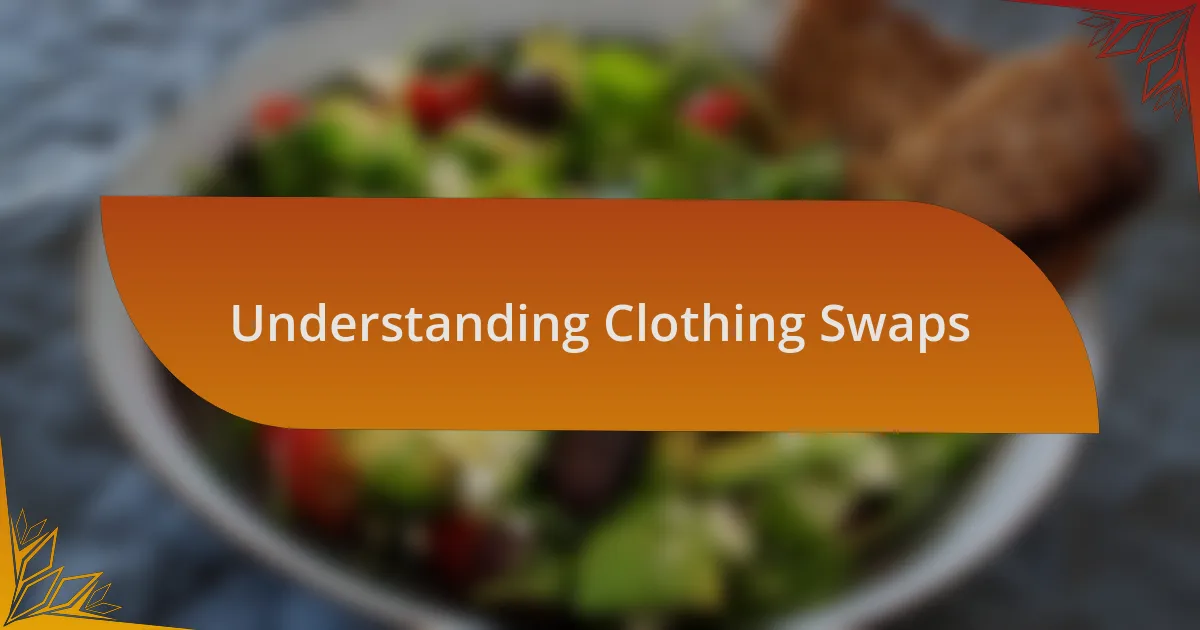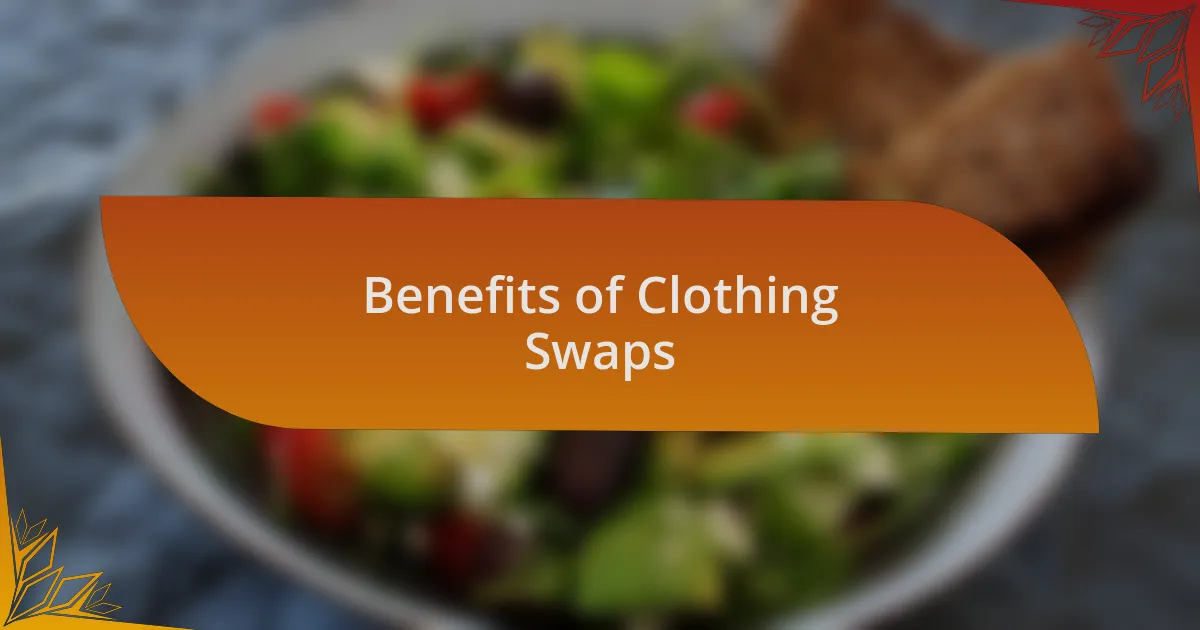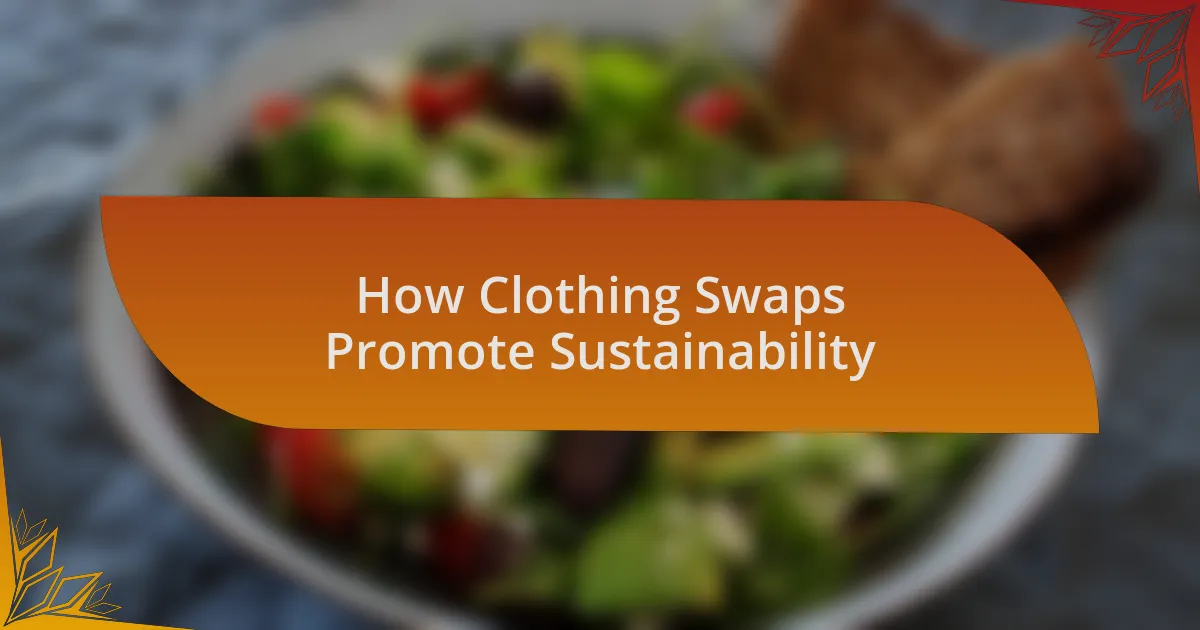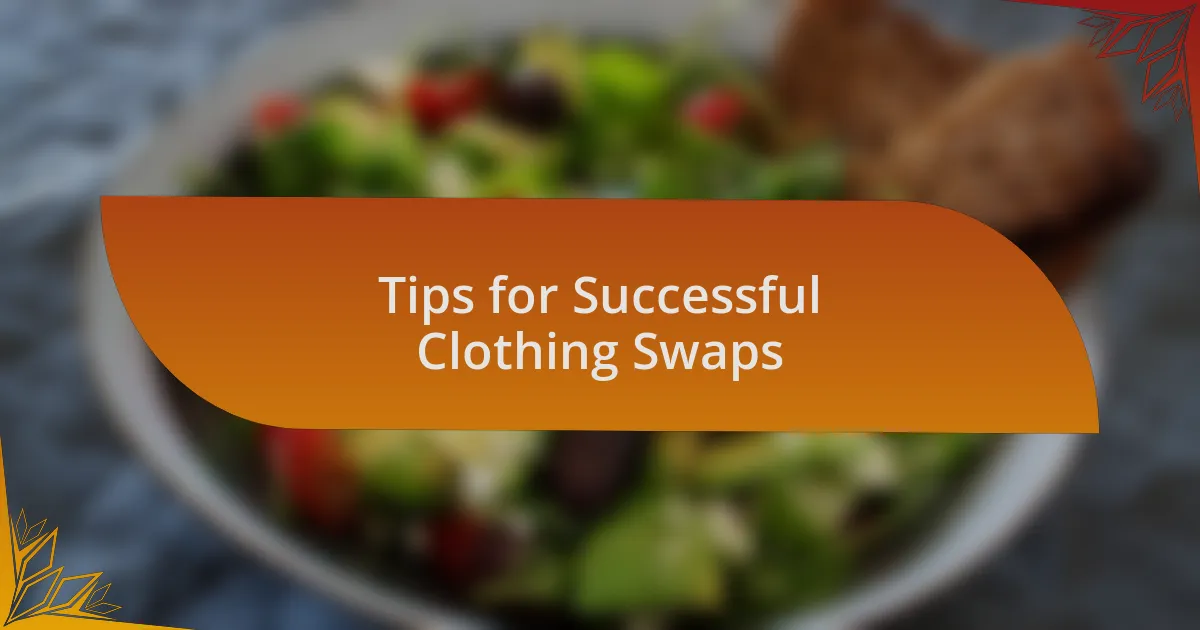Key takeaways:
- Clothing swaps promote sustainability by reducing textile waste and encouraging mindful consumption.
- The events foster personal connections and community, transforming clothing exchanges into shared experiences.
- Successful clothing swaps rely on clear communication, a cozy environment, and engaging activities to enhance participant interaction.
- Logistical planning and providing refreshments can significantly improve the overall experience of a clothing swap event.

Understanding Clothing Swaps
Clothing swaps are a refreshing way to give new life to your wardrobe while also promoting sustainability. Imagine gathering with friends, each bringing items they no longer wear, and watching as a once-cherished dress finds a new home. Have you ever felt that rush of excitement when you discover a hidden gem among someone else’s cast-offs?
Participating in a clothing swap not only helps reduce textile waste but also fosters a sense of community. I remember my first swap vividly; it felt like a treasure hunt, surrounded by laughter and shared stories. When you exchange clothes, it’s as if each piece carries a piece of its former owner’s story, making the experience truly personal.
These events create a wonderful opportunity for creativity and self-expression. Consider how many times you’ve hesitated to buy something new because of its environmental impact. Engaging in a clothing swap gives you a chance to refresh your style without the guilt, while also nurturing human connections that can last beyond the swap itself. The joy of reconnecting with old friends or making new ones over a shared interest in fashion and sustainability makes them an experience worth cherishing.

Benefits of Clothing Swaps
One of the most significant benefits of clothing swaps is the substantial reduction in textile waste. I often think about how many clothes end up in landfills each year—it’s staggering. When I attend swaps, I feel a sense of purpose, knowing that we’re collectively making a tangible difference in combating that waste. Isn’t it amazing how a single event can extend the life of so many garments?
From my experience, clothing swaps also open up opportunities for personal connection. I recall a time when I traded a beloved jacket for a stunning vintage blouse. That exchange turned into an engaging conversation about our individual fashion journeys. How often do we get to share those personal stories in our day-to-day lives? Swapping invites us to share our narratives, thereby creating bonds that extend beyond mere transactions.
On top of reducing waste and fostering connections, swaps are an excellent way to refresh your wardrobe without spending a dime. I remember leaving a swap with a newfound confidence, proudly sporting pieces I hadn’t even considered before. Have you ever tried on an outfit and felt an instant spark? It’s truly liberating to discover new styles while saving money and being environmentally conscious at the same time.

How Clothing Swaps Promote Sustainability
Clothing swaps play a vital role in promoting sustainability by actively reducing the demand for new garments. I remember the first time I truly grasped this concept at a lively swap event. It hit me that each piece we exchange represents a choice to actively reject fast fashion, which is notorious for its environmental impact. By participating, we’re not just trading clothes; we’re collectively making a statement that we value quality and sustainability over quantity.
As I sift through racks of pre-loved clothing, I often feel a sense of nostalgia and responsibility. It’s fascinating how each item carries its own story, waiting to be reinterpreted. When someone picks up a piece I once cherished, I often wonder how it will fit into their life. This dynamic not only fosters a community of mindful consumers but also inspires us to think twice before purchasing new items. Isn’t it refreshing to know that our clothing choices can ripple through our environment positively?
Moreover, I find that participating in clothing swaps can be a catalyst for greater environmental awareness. After swapping, I often reflect on how my fashion choices impact the planet. The conversations I’ve had with fellow participants about sustainable practices continue to shape my understanding. Every swap has the potential to spark new ideas about how to minimize waste, whether through upcycling or mindful purchasing, fueling a continuous cycle of sustainability. Wouldn’t it be great if more people viewed fashion through this lens?

Tips for Successful Clothing Swaps
When organizing a clothing swap, I’ve learned that clear communication is key. Setting up guidelines for what types of clothing are acceptable can save a lot of confusion on the day of the swap. For instance, last time, I encouraged attendees to bring nothing worn out, and it turned out wonderfully; we all took home items that felt fresh and exciting.
Another tip I’ve found effective is to create a cozy space for the event. When my friends and I swapped clothes in a warm, inviting environment, it transformed the energy. We shared laughs and stories, which made each item feel even more special as we exchanged not just clothes but memories and connections. Have you felt that buzz in the air when everyone is engaged and excited?
Finally, I believe incorporating fun activities can elevate the swapping experience. At one swap, we organized a mini fashion show to showcase our finds. It was a delightful mix of empowerment and creativity, turning what could have been a mundane event into a celebration of style and individuality. By adding these elements, we not only boosted engagement but also fostered deeper connections among participants. Wouldn’t you want to be part of such a vibrant community?

Organizing a Clothing Swap Event
When it comes to organizing a clothing swap, one crucial step I recommend is setting a date that works for everyone involved. I remember the first time I coordinated such an event; finding a weekend when most of my friends were free made all the difference. It’s energizing to have a full group, sharing laughter and excitement as we unveil our clothing treasures. Have you ever noticed how the vibe shifts when everyone is present and ready to dive in?
Another key element is thorough planning for logistics. Establishing a timeline for drop-offs and the actual swapping session helps keep everything flowing smoothly. I learned this after my initial swap turned chaotic because we had too many people arriving at once. By creating an organized schedule, we ensured everyone had a fair chance to peruse their options without feeling rushed. Doesn’t it feel better when you can take your time to explore new outfits thoroughly?
Let’s not forget about refreshments. When I hosted my last clothing swap, providing snacks and drinks transformed the experience into a social gathering. I swear, some of the best conversations emerged over a shared plate of cookies! Adding this simple touch can foster a more relaxed atmosphere and encourage participants to linger longer, ultimately making the day more memorable. How often do you find that a little food can spark meaningful connections?